 One of the many choices involved when planning a garden is whether the garden will be formal or informal. You may not make a conscious decision about this and let the garden evolve but it will end up being formal or informal anyway. If you want to know which kind of layout you are inclined towards try the activity described below. Its simple, quick, and easy and will give you an indication of your preference. But it’s just an indication at this moment in time. As time goes on your taste and inclination may change.
One of the many choices involved when planning a garden is whether the garden will be formal or informal. You may not make a conscious decision about this and let the garden evolve but it will end up being formal or informal anyway. If you want to know which kind of layout you are inclined towards try the activity described below. Its simple, quick, and easy and will give you an indication of your preference. But it’s just an indication at this moment in time. As time goes on your taste and inclination may change.
Equipment:
 Two each of five small items such as coins, erasures, pencils, paper clips, and hard candy. The sizes and shapes should be different for the best effect and all 10 items must fit comfortably on an 8” x 10” piece of paper.
Two each of five small items such as coins, erasures, pencils, paper clips, and hard candy. The sizes and shapes should be different for the best effect and all 10 items must fit comfortably on an 8” x 10” piece of paper.
 One piece of 8” x 10” plain paper
One piece of 8” x 10” plain paper
Procedure:
Arrange the objects on the paper in a way you find pleasing. There is no right or wrong way to do this; it is a matter of taste.
Analysis:
If you lined things up, matched similar items, and symmetrically balanced them all along a central axis you created a formal layout.
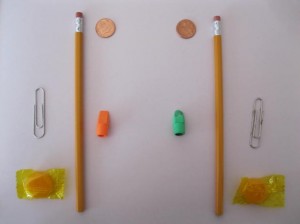
Here are some examples of formal gardens. Formal gardens can be created by using any kind of plant including trees, shrubs, perennials, annuals and even vegetables.

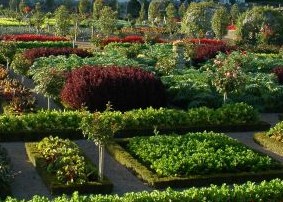
If you didn’t match items or line them up and used asymmetrical balance you created an informal layout.

Cottage gardens are a good example of informal gardens but there are many other kinds including woodland gardens and wildflower meadows.
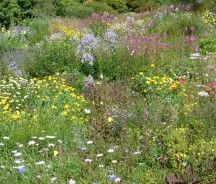
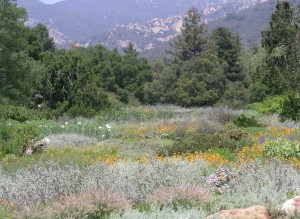
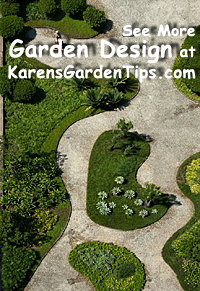 Once you know whether you like a formal or informal garden you can build on that knowledge and plan accordingly. Over time your taste may change and your garden design will reflect that change. Gardens are always works in progress, always changing, so why not take advantage of that fact and capitalize on it?
Once you know whether you like a formal or informal garden you can build on that knowledge and plan accordingly. Over time your taste may change and your garden design will reflect that change. Gardens are always works in progress, always changing, so why not take advantage of that fact and capitalize on it?